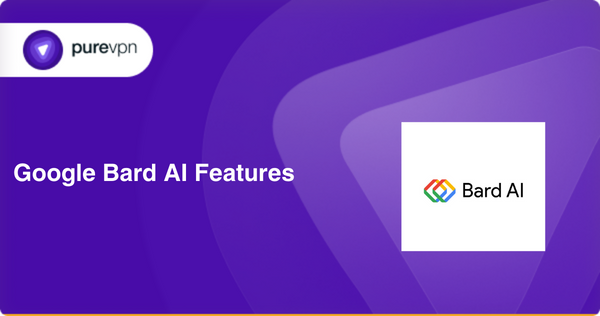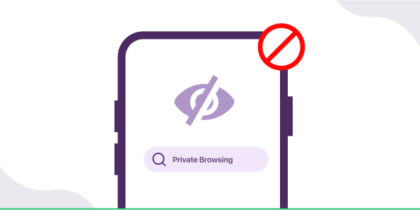Table of Contents
In a world where artificial intelligence (AI) seems to touch almost every aspect of our lives, Google’s latest venture, Bard, is making waves. Following in the footsteps of OpenAI’s ChatGPT, Google’s Bard is an AI chatbot poised to redefine our interactions with technology. Let’s break down what Google Bard is all about, its strengths, its controversies, and the reasons behind its inception.
Learn more: Bard VS ChatGPT

Stepping into the spotlight: The story of Google Bard
Bard is Google’s ambitious foray into AI chat services, designed to emulate the functionality of ChatGPT, albeit with a twist. Bard fetches its data directly from the internet, making it a dynamic and constantly evolving AI chatbot. Its broad capabilities extend to coding, solving mathematical problems, and assisting with writing tasks.
This fascinating AI chatbot was introduced to the world by Google and Alphabet CEO Sundar Pichai on February 6. Despite being a fresh concept at its announcement, Bard had strong foundations, being powered by Google’s Language Model for Dialogue Applications (LaMDA), an AI model unveiled two years prior.
Embracing the AI revolution: Notable features of Google Bard
In large language models (LLMs), Google Bard is a technological tour de force, heralding the next generation of AI chatbots. Its foundations rest on a colossal dataset of text and code, bestowing upon Bard the ability to translate languages, generate creative content, and respond to diverse questions in an insightful manner.
What sets Bard apart is its extraordinary text-generating capacity. It flexes this creative muscle across an impressive range of formats – from poems and scripts to emails and musical compositions.
Furthermore, Bard’s language translation abilities break down linguistic barriers, as they can fluently translate between over 100 languages. The AI chatbot also has a knack for answering questions, whether open-ended, challenging, or downright quirky. Bard’s utility extends to crafting various forms of creative content, a feature that underlines its potential as a tool for inspiring and aiding human creativity.
Remarkably, Google Bard’s extensive capabilities are available to the general public free of charge, marking a significant stride in democratizing AI technology.
Learn more: How to use Google Bard AI
The intricate machinations of Google Bard
At the core of Bard’s operations lies Google’s state-of-the-art large language model (LLM), PaLM 2, revealed at Google I/O 2023. As an advanced variant of the original PaLM, launched in April 2022, PaLM 2 enables Bard to operate at a higher efficiency level and rectify previous shortcomings.

Initially, Bard employed a lightweight version of LaMDA, a resource-efficient model that allowed the chatbot to reach a more extensive user base. Interestingly, LaMDA is built on the Transformer neural network architecture, a technology open-sourced by Google in 2017.
Notably, GPT-3, the backbone of ChatGPT, is also built on this architecture. Google’s bold move to leverage its LLMs, LaMDA and PaLM 2, sets Bard apart from popular AI chatbots like ChatGPT and Bing Chat, which rely on the GPT series of LLMs.
Controversial beginnings and performance hiccups
Despite its promising features, Bard’s launch was marred by controversies. A demo involving inaccurate information about the James Webb Space Telescope (JWST) delivered by Bard drew widespread criticism. The incident underscored the need for rigorous testing, a process Google was keen on initiating through their Trusted Tester program.
The real-world performance of the chatbot also drew a fair share of negative feedback. Bard was criticized for its inability to answer basic questions, longer wait times, and lack of automatic sourcing. Even Google’s CEO, Sundar Pichai, candidly referred to Bard as ‘a souped-up Civic’ in comparison to its seasoned rivals, ChatGPT and Bing Chat.

Before Bard’s turbulent launch, Google’s LaMDA faced controversy when former Google engineer Blake Lemoine suggested it might be “sentient.” Google’s swift denial and subsequent dismissal of Lemoine quell this issue. However, the switch to PaLM 2 is expected to resolve many of Bard’s existing problems.
Understanding the boundaries: Limitations of Google Bard
As revolutionary as Google Bard might be, it’s crucial to remember that it is still a work in progress, carrying its fair share of imperfections. The same vast dataset that empowers Bard can sometimes lead it to produce biased, offensive, or harmful content, reminding us that AI is, after all, a reflection of the data it’s trained on.
The chatbot often needs help to grasp the context of queries, which can generate irrelevant or inaccurate responses. Additionally, Bard needs a learning mechanism, meaning it may repetitively churn out the same errors or biased information.
A further limitation surfaces when Bard is asked to perform tasks that demand creativity or critical thinking, areas where human intelligence remains unmatched. Despite Bard’s text generation capabilities, it can’t truly replicate the depth, nuance, and originality innate to human thought.

Thus, while Google Bard signifies an extraordinary leap forward in AI chatbot technology, it is essential to be mindful of its limitations. The technology remains a potent and promising tool, but not without its flaws. Responsible usage, coupled with an understanding of Bard’s strengths and weaknesses, is vital to harnessing its potential.
The driving force behind Google Bard’s unveiling
The rapid success of ChatGPT likely spurred Google’s decision to throw its hat into the AI chatbot ring.
Within a week of its launch, ChatGPT amassed over a million users, setting a record pace that caught the attention of Swiss bank UBS, who declared it the fastest-growing app of all time. This meteoric rise of AI chat services sparked interest from tech giants like Google, keen to capitalize on this burgeoning market.

(Source: Shutterstock)
The same week Bard was unveiled, Microsoft made headlines with a revamp of Bing, now powered by a next-generation OpenAI large language model explicitly tailored for search. The race for AI supremacy is heating up.
Google’s additional AI endeavors
Google isn’t limiting its AI ambitions to Bard. The tech behemoth is developing several other AI services, albeit cautiously, releasing them only when confident in their performance.
One such project is Imagen, an AI image generator, poised to be a strong competitor to OpenAI’s DALL-E upon release. Additionally, Google has an AI music generator, MusicLM, in the works. However, Google maintains it has no plans to release MusicLM at present.
A recently published paper discussing MusicLM revealed Google’s awareness of the risks associated with such models. They acknowledged potential issues like the misappropriation of creative content, inherent biases in training data that could disadvantage underrepresented cultures and concern over cultural appropriation.
In conclusion
Despite its rocky start, Google Bard represents a significant step in AI chatbots. With its cutting-edge technology and Google’s commitment to improvements, Bard could potentially reshape how we interact with AI.
As with any technological advancement, it’s crucial to balance innovation with ethical considerations, and Google is keenly aware of this. While currently fraught with challenges, Bard’s journey is a testament to the potential and complexities of AI in our world.
Frequently Asked Questions
Google Bard is an AI chatbot developed by Google, designed to pull information from the web and assist with tasks like coding, solving math problems, and writing.
Google Bard was unveiled on February 6, 2023, by Google and Alphabet CEO Sundar Pichai.
Google Bard uses Google’s large language model (LLM) PaLM 2, which is a more advanced version of its predecessor, PaLM. This LLM allows Bard to operate more efficiently and resolve earlier issues. Initially, Bard employed a lightweight model of LaMDA, another Google LLM.
Google Bard was initially released to a limited number of users in the US and UK. However, Google announced at Google I/O 2023 that Bard would be open to the general public with no waitlist.
Google announced that Bard would support Japanese and Korean initially and plans to add support for 40 more languages soon.
Google Bard faced a rocky start, with inaccuracies noted in its information provision. A demo involving the James Webb Space Telescope saw Bard delivering incorrect details, leading to criticism. The further controversy involved the chatbot’s performance, which was considered inferior to competitors like ChatGPT and Bing Chat.
The success of ChatGPT likely influenced Google’s decision to venture into the AI chatbot space. With over a million users in less than a week, ChatGPT became the fastest-growing app of all time, pushing other tech companies like Google to join the race.
Google has several other AI projects in progress, including an AI image generator, Imagen, and an AI music generator, MusicLM. However, Google is taking a cautious approach, ensuring these products’ performance and ethical considerations before release.



